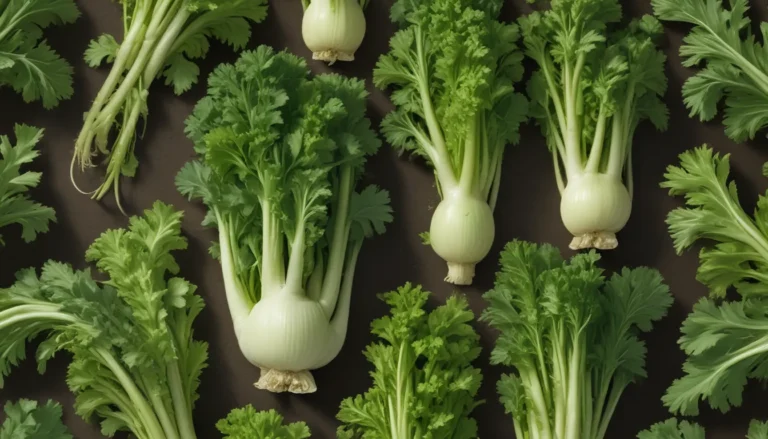Comprehensive Guide to Growing and Caring for Florist’s Azaleas Indoors

Introduction
Are you looking to brighten up your home with a touch of floral elegance during the dreary winter months? Florist’s azaleas might be just what you need. These vibrant plants with their lush, evergreen leaves and colorful blooms are a popular choice for indoor decor around the holiday season. But how can you ensure the long-term health and bloom of these delightful houseplants? In this detailed guide, we have all the answers to your questions and more.
Before we delve into the fascinating world of florist’s azaleas, let’s address a crucial safety concern. Please be aware that azaleas are highly toxic if ingested. If you have pets or young children at home, it’s essential to keep these plants out of their reach.
What You’ll Learn
In this comprehensive guide, we will cover a range of topics related to growing and caring for florist’s azaleas indoors. Here’s what you can expect to discover:
- What Are Florist’s Azaleas?
- Propagation Techniques
- Growing Instructions
- Essential Tips for Care
- Pruning and Maintenance
- Recommended Cultivars
- Managing Pests and Disease
- Best Practices and Uses
- Quick Reference Growing Guide
What Are Florist’s Azaleas?
Azaleas, perennial flowering shrubs belonging to the Rhododendron genus, are a delightful addition to any indoor space. These evergreen plants, particularly the R. simsii cultivars and hybrids, are commonly cultivated as houseplants and frequently given as gifts. While they typically reach a maximum height and width of 18 inches indoors, they can grow up to six feet tall and wide in their natural habitat of eastern Asia.
The unique leaf system of azaleas involves two sets of leaves: thin, spring-emerging leaves that give way to small, thick summer leaves. The flowers of these plants come in various colors such as white, purple, pink, red, and salmon, with single, semi-double, or double petal arrangements. Azaleas thrive in acidic soil with a pH range of 4.5 to 6.0 and require eight hours of bright, indirect light daily when grown indoors.
While azaleas purchased from florists and grocery stores are forced to bloom during the winter months, with the right care, these plants can continue to thrive and bloom for years. Additionally, they are relatively easy to propagate from cuttings, allowing you to expand your collection and share these beautiful plants with others.
Propagation Techniques
One of the most common methods of propagating florist’s azaleas is through softwood cuttings. Here’s a simple guide to propagating these plants at home:
- Spring is the best time to take cuttings when the plant is producing new stem growth.
- Prepare a potting mixture of half perlite and half peat moss.
- Select a young branch and cut it three to six inches down from the tip.
- Remove leaves from the bottom half of the cutting and apply rooting hormone powder.
- Plant the cutting in the potting mixture in a container with proper drainage.
- Place the container on a warm heat mat, mist the soil, and cover with a humidity dome.
- Keep the seedlings warm, watered, and watch for root development within four to eight weeks.
- Transplant the rooted cuttings to larger pots and care for them as mature plants.
How to Grow
When bringing a new florist’s azalea home, ensure it receives bright, indirect light and consistent temperatures of 60 to 65°F. Water regularly, allowing the top half-inch of soil to dry between waterings and avoid watering the leaves. These plants prefer slightly acidic soil and can be repotted into a larger container with proper drainage after the blooms fade.
Fertilize with an acid-loving plant fertilizer during active growth and avoid over-watering to prevent root rot. Keep the plant humid by placing it on a tray with water-filled pebbles, and if the leaves begin to drop, immerse the pot in lukewarm water. Gradually acclimate the plant to outdoor conditions in summer, but bring it indoors before the first frost to protect it from freezing temperatures.
Essential Tips for Care
To ensure the health and vibrancy of your florist’s azalea, follow these essential care tips:
- Provide bright, indirect sunlight.
- Water regularly, allowing the soil to partially dry between waterings.
- Fertilize with acid-loving plant food during active growth.
- Maintain humidity around the plant by using a water-filled tray with pebbles.
- Avoid heavy pruning, but deadhead spent flowers and trim any wayward branches if needed.
- Mimic the chilling period required for blooming by gradually reducing watering and lowering temperatures for two months.
Proper care and attention to these basic guidelines will ensure the long-term health and blooming success of your florist’s azaleas.
Cultivars to Select
Several captivating cultivars of florist’s azaleas are available for indoor growing. Here are a few festive and elegant varieties to consider:
- Christmas Cheer: Featuring ruffled, double-flowered blooms in red and white, ‘Christmas Cheer’ is a delightful plant that brightens up spaces during the holidays.
- Snowflake: A topiary ‘Snowflake’ azalea offers braided branches and snow-white, ruffled blooms for a charming decorative touch.
- Reindeer Red: With cheery red, ruffled blooms against dark green foliage, ‘Reindeer Red’ adds a touch of elegance to any home setting.
Explore these exquisite cultivars to enhance your indoor space and enjoy the beauty of florist’s azaleas year-round.
Managing Pests and Disease
While florist’s azaleas are relatively resistant to pests and diseases when grown indoors, be on the lookout for root rot and spider mites. Root rot can occur with over-watering, leading to irreversible damage to the plant. Spider mites may infest the foliage, but timely intervention with appropriate treatments can help mitigate the issue effectively.
Best Practices and Uses
Florist’s azaleas are not only decorative plants but also rewarding to propagate and share with others. Consider gifting new plants or using them to brighten up various indoor spaces. By following the recommended practices and care tips, you can enjoy the colorful blooms and lush foliage of these charming houseplants for years to come.
Quick Reference Growing Guide
Here is a quick reference guide to essential information for growing florist’s azaleas indoors:
- Plant Type: Perennial flowering shrub
- Flower/Foliage Color: Cream, coral, mauve, pink, red, salmon, white/green
- Native to: Eastern Asia
- Maintenance: Moderate
- Hardiness (USDA Zone): 8-10 (outdoors)
- Exposure: Bright indirect light
- Soil Type: Organically-rich potting soil
- Height: 12-24 inches
- Spread: 12-18 inches
- Water Needs: Moderate-high
- Common Pests: Aphids, spider mites; root rot
- Genus: Rhododendron
- Species: Simsii
Conclusion
Florist’s azaleas are a delightful addition to any indoor space, offering vibrant blooms and lush foliage that brighten up even the darkest winter days. By following the guidelines outlined in this comprehensive guide, you can ensure the long-term health and blooming success of these charming houseplants. Whether you are a seasoned gardener or new to indoor plant care, florist’s azaleas are a rewarding choice for adding colorful cheer to your home decor. Share your favorite azalea stories and questions in the comments below, and don’t forget to explore additional resources on growing and caring for these lovely plants. With the right care and attention, you can enjoy the beauty of florist’s azaleas year-round.
Remember to handle these plants with care due to their poisonous nature, especially if you have pets or young children at home. By following the advice provided in this guide, you can cultivate flourishing florist’s azaleas and create a colorful oasis in your indoor spaces.





